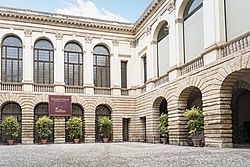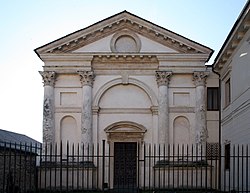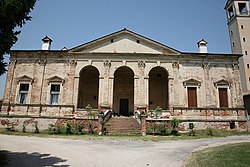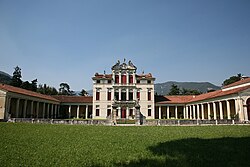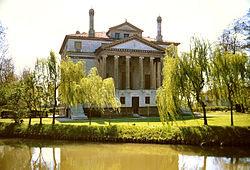This article needs additional citations for verification .(October 2012) |
| UNESCO World Heritage Site | |
|---|---|
 Architect Andrea Palladio | |
| Location | Veneto, Italy |
| Criteria | Cultural: (i), (ii) |
| Reference | 712bis |
| Inscription | 1994 (18th Session) |
| Extensions | 1996 |
| Area | 333.87 ha (825.0 acres) |
| Coordinates | 45°32′57″N11°32′58″E / 45.54917°N 11.54944°E |

City of Vicenza and the Palladian Villas of the Veneto is a World Heritage Site in Italy, which protects buildings by the architect Andrea Palladio. UNESCO inscribed the site on the World Heritage List in 1994. [1] At first the site was called "Vicenza, City of Palladio" and only buildings in the immediate area of Vicenza were included.
Contents
Various types of buildings were represented in the original site, which included the Basilica Palladiana, Teatro Olimpico and palazzi in the city itself, along with a few villas in the vicinity. [2] However, most of Palladio's surviving villas lay outside the site. In 1996 the site was expanded. Its present name reflects the fact that it includes all the Palladian Villas of the Veneto. City of Vicenza and the Palladian Villas of the Veneto also has some examples of ecclesiastical architecture, including the relatively small church at Maser. [3] In total there are 47 Palladian buildings registered in the UNESCO list in the Veneto region. [4]
There is another important group of urban buildings by Palladio in Venice, a city which also has World Heritage Site status. Venice has notable examples of ecclesiastical architecture by Palladio, including the San Giorgio Maggiore (church), Venice.









